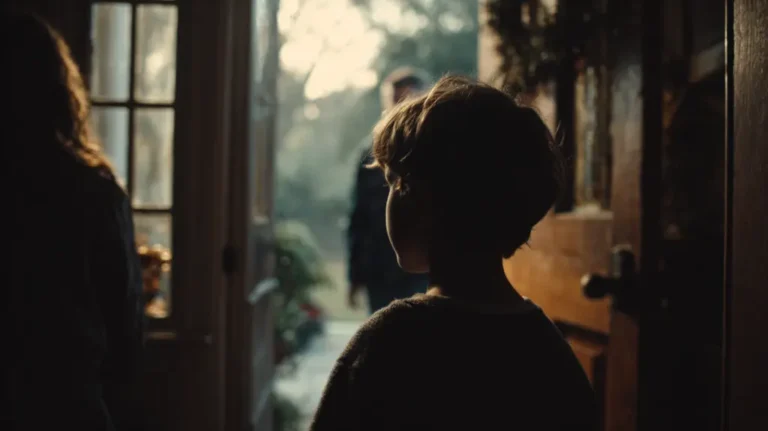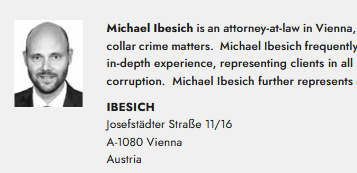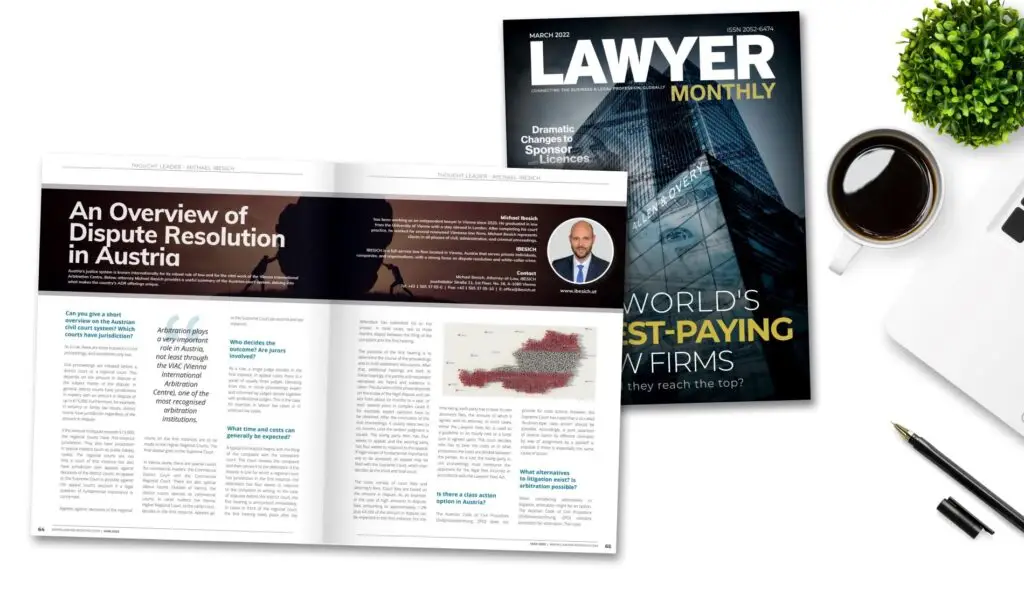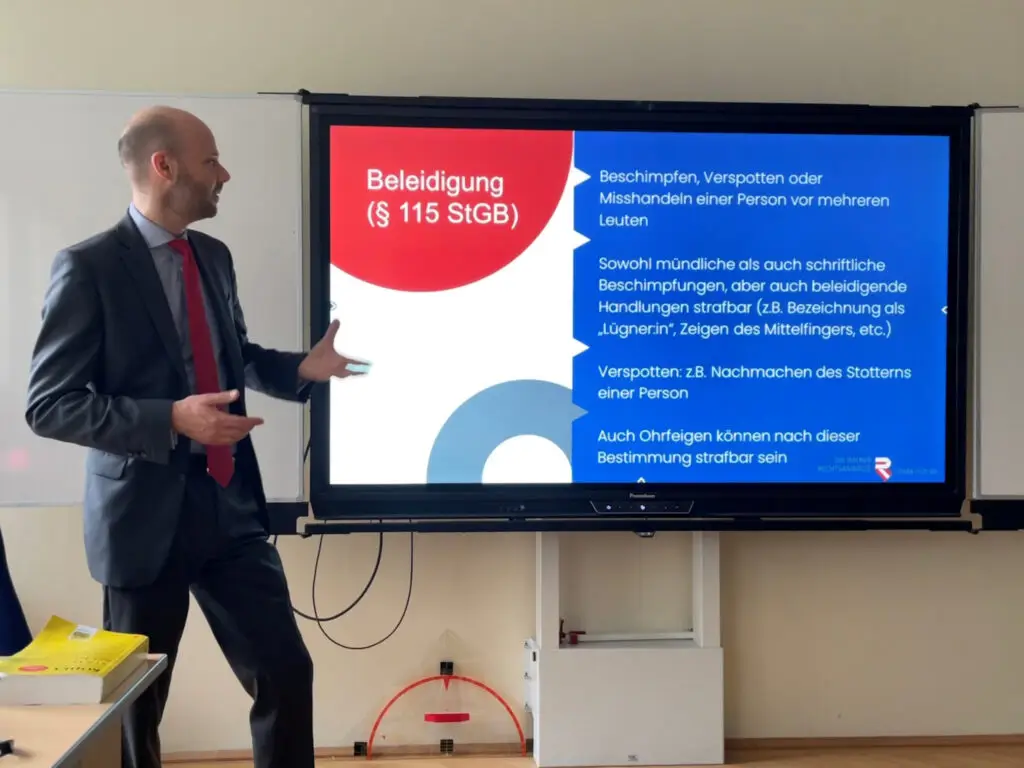
Child custody

Attorney specializing in family law & divorces, founder of the law firm IBESICH
Legal Notice/Disclaimer: The following information is intended for general guidance only and does not replace individual legal advice. For advice tailored to your specific situation, please consult a lawyer or another qualified legal professional.
A divorce with children presents parents with particular challenges – both emotional and legal.
In Austria, in the event of a separation or divorce involving minor children, important questions must be clarified:
- Who will assume custody (custody rights) for the children?
- How will contact rights (formerly “visitation rights”) be arranged?
- Who pays child support and in what amount?
These points must, for the welfare of the children, be settled by mutual agreement or, if necessary, by the courts. The following guide explains the legal situation in Austria in an easy-to-understand way and provides a comprehensive overview of custody, support, and more – so that you know what to consider in a divorce with children and how to make the separation as conflict-free as possible.
In doing so, both amicable solutions and custody disputes are examined. In short: What to do in a divorce with children? Inform yourself early, seek support, and always place the best interests of the child at the center.
What you need to know
Areas of Custody:
- Care & upbringing
- Asset management
- Legal representation
Regulations & Procedures:
- Child’s best interests as the priority
- Custody usually shared, sole custody is rare
- Amicable arrangements are best for children
- Court decides in case of disagreement, usually with a transitional phase (6 months)
- Children from about age 10 are heard, from 14 they have a right to participate
- Contact rights are independent of child support; visitation cannot be restricted due to payments
- In disputes, supervised visitation or a child advocate can be appointed
Shared Residence Model
- Child alternates approximately equally between both parents
- Legally not a separate custody status, but recognized
- High demands on organization, communication, and cooperation of parents
International Regulations
- Jurisdiction usually based on the child’s residence
- Moves abroad generally require consent or court approval
- Relocation abroad can have a major impact on contact rights
Table of Contents
Divorce with Children
If a marriage is on the verge of breaking up and children are affected, emotions and legal requirements collide. Children notice very early when their parents no longer get along and often react to the separation with sadness, anger, or feelings of guilt. For them, the familiar family world falls apart – they often fear losing a parent or blame themselves for the divorce. In this situation, a gentle approach is required.
Parents should, despite their own conflicts, try to speak together and calmly with the child about the changes. It is important to reassure the child that they will continue to have both parents and that they bear no blame for the separation.
In addition to the emotional aspects, numerous practical and legal questions must be clarified in a divorce with children. These include in particular:
- Custody arrangement: Who has custody (Obsorge) after the divorce? Will joint custody remain, or will one parent receive sole custody?
- Main residence of the child: With which parent will the child primarily live and be cared for?
- Contact rights: How will the visiting times of the parent living apart be arranged (right of access)?
- Support: In what amount is child support (maintenance) to be paid, and how will it be provided?
- Other agreements: e.g., division of school holidays, holiday arrangements, changing schools, change of residence, etc., that affect the child.
All of these points should ideally be clarified by mutual agreement. In a mutual‑consent divorce with children, parents are required to submit a written agreement on custody, contact rights, and support to the court. If no agreement is reached, the court decides within the framework of custody or contact‑rights proceedings. In both cases, the best interests of the child—that is, the child’s mental, emotional, and physical well‑being—always take top priority. The following chapters explain the relevant topics step by step and provide tips on how parents and children can best cope with this difficult phase.
Custody: Definition and Meaning
Custody (in Germany referred to as parental authority or parental custody) in Austria denotes the sum of parental rights and duties toward a minor child. Whoever is entrusted with custody has the responsibility to care for and raise the child, to manage the child’s assets, and to represent the child legally. This responsibility is generally borne jointly by both parents if they are married at the time of the child’s birth. In the case of unmarried parents, the mother initially receives sole custody, but unmarried parents can subsequently agree on joint custody (personally at the registry office or by court agreement). Custody ends when the child reaches the age of majority, i.e., the 18th birthday.
Custody covers several areas:
- Care and upbringing: Everyday care, supervision, support, and education of the child.
- Asset management: Administration of the child’s property (e.g., savings account) in their best interest.
- Legal representation: Representation of the child in dealings with third parties in all matters (e.g., concluding contracts, dealings with authorities).
A distinction is made between joint custody (both parents share responsibility) and sole custody (only one parent has custody rights). The legislator favors joint custody because it promotes the child’s relationship with both parents. Sole custody of one parent is comparatively rare in Austria and usually only occurs if the parents agree to it or if one parent endangers the child’s welfare. For example, the family court may withdraw or restrict custody from a parent if the child’s welfare is seriously endangered (for instance through violence, neglect, or gross inability to raise the child). However, such withdrawal of custody is considered a last resort and requires serious grounds.
Example: Mrs. M. and Mr. K. are getting divorced and have a 4-year-old son. Both parents are employed and care lovingly for the child. There is no reason to withdraw custody from either parent. Therefore, custody will likely remain with both parents after the divorce (joint custody). They only need to decide with which parent the son will primarily live so that his everyday life is properly organized.

Regulation of Custody after Divorce
If the marriage is dissolved or the parents with custody rights live separately, joint custody generally remains in place by law. This means that both parents initially retain custody rights. However, it must now be determined how custody will be exercised in practice, in particular:
- In whose household will the child primarily be cared for? (Who is the so-called primary caregiving parent?)
- How will contact with the other parent be arranged? (Visitation times, weekend/holiday arrangements)
- Who will pay child support, and in what amount?
The parents must inform the court with which parent the child will have their main residence. This parent usually receives the primary care of the child and, in connection with this, the right to determine the child’s place of residence.
The other parent continues to hold custody rights (unless sole custody is agreed upon) but must accept that the child primarily lives with the ex-partner.
Important: Even with joint custody, it may be agreed that one parent makes decisions alone in certain areas. Conversely, even with sole custody of one parent, the other retains certain minimum rights (rights to information, expression, and representation—see below).
If the divorce is by mutual consent, the parents must include a detailed custody and contact arrangement in the divorce settlement (the divorce agreement). This is reviewed and approved by the court if it does not conflict with the best interests of the child.
Such an agreement could, for example, state: “The parents continue to exercise custody jointly. The child primarily lives with the mother, while the father has visitation rights every other weekend from Friday to Sunday, as well as half of the school holidays. Both parents make important decisions regarding the child jointly.”
If the parents cannot agree or if one parent explicitly applies for sole custody, the court must intervene. In this case, the law first provides for a transitional period: the court orders a temporary custody arrangement for a period of six months. This period is also referred to as the “phase of provisional parental responsibility.”
The court decides with which parent the child will primarily live during this period and establishes temporary contact rights for the other parent. Importantly, during these six months, the existing custody arrangement formally remains in place—i.e., both parents continue to have custody rights—but the child’s care and daily life take place primarily with the parent designated by the court. The other parent should have sufficient contact during this time to continue fulfilling their role in care and upbringing. In addition, a temporary support arrangement is usually made during this phase.
The aim of this transitional period is to gain insight into which arrangement best serves the best interests of the child in the long term. After about six months, the court makes a final decision on custody, based on the experiences of the transitional period and, of course, the needs of the child.
The court may either grant sole custody to one parent or confirm joint custody. Even if both parents continue custody jointly, the court determines bindingly in which household the child will primarily be cared for. The final decision is guided by the best interests of the child and by which parent can, in practice, provide the most stability and care.
After such a final arrangement is made, if circumstances change significantly later (e.g., one parent moves far away or new problems arise), either parent may apply to the court for a modification of custody. The procedure is then conducted again (similar to the one above), with a focus on the child’s current situation.
In summary, for most divorced couples, joint custody remains in place. Only if there is a contrary agreement or a serious dispute does this change. The child should ideally continue to receive the upbringing and love of both parents, even if mom and dad no longer live together. The legislator assumes that this is generally in the best interests of the child. Of course, there are situations in which one parent is granted sole custody for important reasons—but these are exceptions that require careful examination (e.g., endangerment of the child).
Example: Sophie’s (7 years old) parents cannot agree after the divorce on where Sophie should primarily live, so the court intervenes. It orders that Sophie live with her mother for six months, since that is where her familiar environment (school, friends) is, and grants the father generous visitation rights every weekend.
After these six months, the court assesses the situation: Sophie has become settled with her mother, while the father has reliably cared for her during visitation. Since the parents remain deeply conflicted, the court ultimately decides that the mother will receive sole custody, in order to simplify decision-making. The father retains extended visitation rights (every other weekend as well as half of the holidays), so that Sophie can still spend substantial time with him. In this specific case, the court considers this arrangement best for Sophie’s well-being.

Contact Rights (Visitation Rights)
Children have a legally established right to regular personal contact with both parents. Likewise, each parent has the right (and the duty) to see their child and spend time with them. In the past, the term “visitation rights” was used, but today people mostly speak of contact rights or, informally, of “access” to the child. The meaning is always the same: the personal meetings and shared time between the child and the parent with whom they do not primarily live.
Ideally, the parents agree on a visitation arrangement that meets the needs of the child and both parents. This should be appropriate for the child’s age and cover both leisure activities and everyday routines. For example, in the case of a school-aged child, it could be agreed that the child spends every second Friday to Sunday with the non-residential parent and also every Wednesday afternoon. For a toddler, however, more frequent but shorter visits would be sensible to maintain bonds with both parents. The key is continuity and reliability – these give children a sense of security.
If the parents cannot reach an agreement, the court must determine contact rights upon request. The court bases its decision on the best interests of the child, especially considering:
- The age and needs of the child (e.g., a toddler needs more frequent contact in shorter intervals, while a schoolchild can handle longer gaps).
- The child’s previous caregivers and the intensity of the relationship with each parent.
- The wishes of the child, provided the child is old enough to express them (these are given increasing weight as the child grows older).
- Practical circumstances such as distance between residences, school obligations, etc.
The arrangement should ideally include both periods of leisure (weekends, holidays) and everyday times (e.g., doing homework together in the afternoon). This way, the child’s everyday life remains connected to both parents. In practice, common models include “every second weekend plus one evening during the week” or “alternating weekends” plus shared holidays. Many individual arrangements are possible, as long as they are in the child’s best interest.
It is important to note: contact rights are independent of child support. Even if the parent obliged to pay support is behind on payments, the other parent may not withhold contact between the child and that parent. Conversely, paying support does not entitle a parent to unrestricted access to the child against the child’s will. Contact and support are two separate rights and duties.
Both parents are obliged to refrain from anything that could damage the child’s relationship with the other parent – the law explicitly states this in the form of the duty of good conduct. Thus, one parent may not speak badly of the other in front of the child or deliberately obstruct contact. Such behavior would create loyalty conflicts for the child and must be avoided. In extreme cases, persistent misconduct of one parent toward the other can even affect custody decisions.
The law provides options to ease problematic contact situations. If visits are difficult – for example, because the child does not handle transitions well or conflicts escalate – supervised visitation may be ordered. In such cases, visits take place in the presence of a neutral, trained person (e.g., in a visitation center) who ensures the process runs smoothly. Such supervision can be ordered by the court on request or ex officio, but the parents can also agree voluntarily. This tool is particularly useful when distrust or accusations exist – the neutral supervision provides safety for all involved.
Hearing of the child: The older the child, the more influence they have on the design of contact rights. Children under about 10 are generally not considered capable of freely deciding whether or not to see the other parent; however, from school age onward, the court will ask and take their opinion seriously, provided it does not contradict the child’s best interests.
From the age of 14, children in Austria have the right to file their own applications regarding custody or contact rights in court. In addition, children over 14 cannot be forced to visit against their will. In practice, this means: a 15-year-old, for example, can decide not to go to the other parent’s house on a particular weekend if they really do not want to. Younger children, however, are generally expected to maintain regular contact, unless there are serious reasons otherwise (e.g., proven violence).
Example: After the separation, 8-year-old Laura lives with her mother. Her father has agreed contact rights every second weekend. At first, this worked well, but recently Laura often wants to return to her mother earlier on Sundays to meet her friends.
The parents discuss the issue and agree flexibly: Laura continues to spend every second weekend with her father, but on Sundays she can attend a children’s group in her mother’s town after lunch, where she sees her friends. The father brings her there, and the mother picks her up. This way, Laura’s wishes are respected without cutting off her contact with her father. – If Laura were already 15 and completely refused the weekend visits, she could do so. The father would have to accept this but should try to stay in conversation and find other opportunities to meet in order not to lose the relationship entirely.
Child Support (Alimony) in Divorce
Children have a legal right to support from both parents. This right exists regardless of whether the parents were married, lived together, or not. In principle, both mother and father must contribute to the support of the child according to their financial capacity. The parent who primarily cares for the child and has the child living in their household fulfills their obligation in non-cash form – that is, through care and supervision, providing housing, food, clothing, etc. In this way, that parent already meets their support obligation through the child’s daily care. The other parent, with whom the child does not live, owes cash support (also called “alimony”). This is usually paid monthly in advance to the caregiving parent (or the child’s legal representative).
The amount of cash support essentially depends on two factors:
- Financial capacity of the obligated parent: The decisive factor is their monthly net income. Certain fixed expenses and possible additional support obligations are deducted to determine the “support-relevant income.” The so-called principle of imputation applies: the parent must make the best possible use of their working capacity to provide support – refusal to work or deliberately low income does not exempt them from the obligation.
- The needs of the child: These increase with age. An older child has higher living costs (clothing, school, hobbies) than a toddler. In practice, courts and youth welfare offices often use percentages or tables (similar to the German “Düsseldorf Table”) to determine an appropriate amount of support. For example, the guideline value for one child, depending on age, is around 16–22% of the obligated parent’s net income, with upper limits (the so-called “luxury limit”).
When calculating child maintenance, additional factors may also be taken into account. This can include situations where the maintenance payer provides benefits in kind, such as covering housing costs or caring for the child for extended periods on a regular basis, which can reduce the required cash payment. Family allowance may also be credited to a certain extent.
Detailed explanations, practical calculation examples, and further information on the subject can be found on our subpage Support & Alimony, which serves as comprehensive guidance and a decision-making aid.
Dual Residence / Shared Custody (Alternating Care)
Recently, one often hears about the dual residence model, also known as the shared custody model. This means that after the parents’ separation, the child does not primarily live with one parent but instead spends approximately equal time in both parents’ households.
In practice, this often means that the child stays one week with mom, the next week with dad (or alternating every two weeks, or split weeks). Both parents thus share care and upbringing as equally as possible. This model is intended to ensure that the child experiences both parents in everyday life and that neither is reduced to a “weekend parent.”
Legally, dual residence in Austria is (still) not explicitly anchored as a separate custody status. The law still requires that in the case of joint custody, one household is designated as the child’s main residence. Theoretically, therefore, the wording of the law contradicts the idea of a child having two equal main residences.
However, in 2015, the Constitutional Court ruled that, in the best interests of the child, an approximately equal care arrangement can indeed be ordered or approved if it is the best solution in the specific case. In other words: courts bypass the rigid rule by formally requiring a “main residence” but still factually accept a shared custody model, as long as it works well for the child.
Dual residence offers opportunities but also places high demands. On the positive side, the child can live with both parents in everyday and leisure situations. Neither parent becomes merely a visitor; both remain true caregivers. Parents often also find it relieving to share caregiving responsibilities—mothers can, for example, expand their professional activities, and fathers can take on a more intensive parenting role.
On the other hand, the model requires enormous organization: the child needs two fully equipped living environments (clothes, school supplies, medication—all must either be duplicated or moved back and forth). Excellent communication and cooperation between parents are necessary. They must coordinate on schedules, activities, doctor’s appointments, and trust one another to share information and keep agreements.
For the child, moving between two households can have advantages and disadvantages. Some children enjoy truly being “at home” with both mom and dad and having the best of both worlds. Others find the constant switching stressful and long for a single main home. It requires a high degree of flexibility from the child to continually adjust. Much depends on the individual case—especially the child’s age, personality, and the parents’ ability to manage conflicts constructively.
Dual residence only works if both parents truly want and live the model. If constant conflict exists or if one parent ultimately shifts the main burden to the other, the child becomes caught in the middle. Courts will therefore usually only order or approve a 50/50 model if both parents are cooperative and live in close proximity (so school and logistics remain manageable). Otherwise, it is often better to establish one clear main residence and grant the other parent generous contact rights.
Financially, shared custody raises new questions about child support: if both parents care equally, each theoretically provides support in kind during their care periods. In many cases, this means no or only reduced cash support is paid.
However, if the parents’ incomes differ significantly, child support payments may still be necessary in the shared custody model to ensure that the child enjoys similar living conditions in both households. Parents should discuss these details in advance and, if necessary, regulate them with the help of experts (youth welfare office, lawyer, or mediator).
Example: 10-year-old Emma has been living alternately with her mother and father since their divorce—one week with each. Both live in the same district, and Emma remains at her school. Her parents created a detailed plan for hobbies, homework, and routines so that Emma enjoys a consistent schedule in both weeks.
Her father earns somewhat more than her mother, so he transfers a small monthly amount to cover Emma’s expenses in both households (e.g., more food expenses at her mother’s home, where Emma eats more often). Emma likes the shared custody model—she has two homes and enjoys time with each parent. However, when she turns 13 and enters puberty, she no longer wants to change households so often. The parents respond and switch to a 14-day alternating model (two weeks with each parent), reducing the frequency of transitions. This flexibility keeps the arrangement suitable for Emma.
Custody by Agreement vs. Contested Proceedings
For all questions concerning custody, contact, and support, the following applies: An amicable arrangement between parents is almost always the better way—especially for the child. A contested divorce with court proceedings, expert opinions, and mutual accusations is nerve-racking, often lengthy, and costly. Most importantly, ongoing conflict means enormous stress for the children, who inevitably sense the tension between their parents. Therefore, the top priority should be to reach agreement as far as possible and avoid unnecessary disputes.
In Austria, there are several mechanisms to support parents and reduce legal conflicts:
- Before a consensual divorce with minor children, parents are required to attend an officially recognized parental counseling session on the topic of child welfare during separation. This one-time session (according to § 95 para. 1a AußStrG) is intended to make parents aware of the needs of children in divorce situations and how to handle them. It is not couples therapy but an information and prevention measure.
- The negotiated agreements on custody, residence, contact rights, and support are set down in writing in a divorce settlement agreement and submitted to the court. The court merely reviews whether the agreements comply with the law and serve the child’s best interests, and will then usually pronounce the divorce. Thus, parents must have clarified everything essential before the court hearing—this significantly speeds up the process and avoids lengthy evidence-taking.
- If complete agreement is not possible, partial areas can still be settled out of court. Often, for example, parents agree on contact and support but disagree on custody. In such cases, the court decides only on the disputed part (here, who receives custody), while confirming the remaining agreements.
- Even during ongoing court proceedings, parents can return to an amicable solution at any time. The court gives them the opportunity to do so—for example, by adjourning hearings to allow time for discussions or for mediation.
- Mediation is a proven tool for breaking deadlock. A neutral mediator—often with legal and psychological training—mediates between parents and helps them find a consensus independently. Agreements reached in mediation can later be incorporated into a court settlement. Mediation is voluntary, but courts often encourage it in custody disputes. Successful mediation saves time, costs, and stressful conflict for everyone involved.
- In some cases, when the situation is very entrenched, the court may call in the Family Court Assistance Service. This consists of specially trained social workers or psychologists who support the court. They speak with the parents and child, make home visits, and attempt to mediate in the child’s best interests. They ultimately report to the court and give recommendations on what would be best for the child. Their work can help parents reach an agreement, or at least give the court a comprehensive picture of the family situation.
- In highly contentious proceedings that are particularly stressful for the children—concerning custody and the right to personal contact (formerly visitation rights)—the court can appoint a so-called children’s advocate. The children’s advocate focuses exclusively on the concerns and wishes of the minors. They serve as a point of contact for the children and, with their consent, present their views to the court. The advocate is bound by confidentiality and acts in the child’s interest. The costs are normally borne by the parents (a flat court fee per parent depending on the duration, though the first 6 months are free; there is also the possibility of exemption through legal aid).
Of course, there are situations where, despite all efforts, a court must decide on custody or contact. In such cases, it is important to be represented by an experienced lawyer. Custody or contact proceedings in Austria are conducted as non-contentious proceedings (guardianship proceedings), meaning there are no plaintiffs or defendants in the traditional sense—the court investigates the facts on its own initiative.
The court may call in experts (such as psychological evaluators when parental suitability is at issue) or request reports from child and youth services. The atmosphere is often less adversarial than in civil trials, but such proceedings can nevertheless be emotionally exhausting. Parents should always remember that a court order formally resolves the conflict, but parenthood continues afterward. A “war of the roses” usually leaves deep scars—it is therefore worthwhile to carefully weigh each step in court and seek dialogue whenever possible.
How long does a divorce with children take?
A common question from parents. There is no exact universal answer, but as a rule of thumb: An amicable divorce proceeds relatively quickly, often within a few months, provided all necessary agreements are in place (the law does, however, require that the couple has lived apart for at least 6 months before a consensual divorce can be granted). A contested divorce with disputes over children, however, can take much longer—often 1–2 years or more, depending on complexity and appeals. Every settlement reached shortens the duration considerably.
In summary: Amicable solutions save time, money, and nerves and are almost always better for the children. Where this is not possible, Austrian family law provides various support measures—from parental counseling to family court assistance to the children’s advocate—to help achieve a child-centered solution.

Child at the Center: Best Interests of the Child and Hearing
The best interests of the child are the central standard in all family law decisions. But what does that mean in practice? The law itself names several important aspects: parents should promote the physical, intellectual, and emotional needs of their children, provide them with care and security, and ensure an upbringing free from violence. Decisions made by the parents (or the court) must always aim to enable the child to grow up in a healthy and stable environment. Many factors must be considered:
- Stability and continuity: Children need reliable caregivers and stable living conditions. Abrupt changes of the primary caregiver or frequent relocations can be stressful. Therefore, in custody decisions, the court considers which parent can best preserve the child’s familiar environment (home, school/kindergarten, circle of friends).
- The child’s bonds: How close is the child’s relationship with mother and father? Are there siblings whose bonds must also be considered? The court seeks a solution that preserves the child’s important relationships. For this reason, joint custody is favored today, so that both parents remain in the child’s life.
- Parental suitability: Both parents love their child—but who can better meet the child’s needs in everyday life? Factors such as time availability, parenting skills, living situation, and social environment all play a role. For example, if one parent has a more stable support network (grandparents nearby, a supportive new partner, etc.), this can be evaluated positively.
- The child’s wishes: As children grow older, their own preferences become increasingly important. From about age 10, the court will hear children personally in custody or contact proceedings (usually in the absence of the parents, in a protected setting). The child can express where they would prefer to live or how they would like contact arranged. This wish is not absolutely decisive, but it carries significant weight. From age 14, a child can even file applications themselves and actively participate in the proceedings, which gives their opinion even greater weight.
- Parents’ willingness to cooperate: Often a decisive factor: how well can the parents, despite separation, work together in the child’s best interests? The best shared custody model is useless if the parents are in constant conflict—the child would be caught in the middle. Therefore, the court will generally choose the solution that offers the child more peace and less potential for conflict. This can mean awarding custody to one parent alone if the parents are extremely hostile— even if both are otherwise loving parents.
- Special needs: If the child has health problems, a disability, or requires special support for other reasons, this must also be considered in all arrangements. The same applies, for example, to the question of which school the child attends—again, the child’s needs are the priority.
In difficult cases, the court often seeks the assistance of experts (e.g., child psychologists) to assess the best interests of the child. Ideally, however, parents themselves know their child best and agree on arrangements that promote their well-being. The legislator has set out a general principle: parents must refrain from anything that endangers the best interests of the child and must do everything that promotes them. This principle can serve as a guideline for parental behavior.
Another important aspect of the child’s welfare is that children should not be forced to make decisions out of loyalty conflicts. They should not have to “choose” between mom and dad. Therefore, children’s wishes are sought carefully. Often, a child is asked indirectly (“Where do you feel more comfortable?”) to avoid putting them in the position of having to openly reject one parent. The hearing usually takes place with the judge or a specially trained expert, in the absence of the parents. The conversation is conducted in an age-appropriate way—playful for younger children, more as equals for adolescents. The goal is to understand how the child is doing and what they want, without pressuring them.
As mentioned, from age 14 young people can also actively participate in proceedings. In theory, they could hire their own lawyer and file motions—though in practice this is rare. More often, a teenager simply tells the judge very clearly what they want (e.g., “I absolutely do not want to move in with my father!”), and the court then effectively complies, since forcing the child would be counterproductive. Legally, it is also established that from age 14 a child cannot be forced into visitation against their will. In other words, the enforcement of contact rights has limits here.
In difficult cases—for example, when statements from the child and parents differ significantly—further measures can serve the child’s welfare. A children’s advocate (mentioned above) can be appointed, especially for younger children (up to around 14, or up to 16 if needed), to help them express their feelings and wishes without directly confronting their parents. The advocate creates a safe space for the child, where they can speak openly—something they may not be able to do in front of mom or dad. Experience shows that children come out of contentious custody proceedings less traumatized when they feel heard and know there is someone there just for them.
In summary, the best interests of the child is a multifaceted concept that encompasses all aspects of a child’s life and upbringing. Parents should ask themselves with every decision—whether a day-to-day matter or a major life choice: “What does this mean for our child? Will it be good for them?” If this attitude is consistently applied, much is already achieved.
International Aspects of Custody and Contact Rights
In our globalized world, it is increasingly common for one parent to want to move abroad after separation or for parents to come from different countries. Such international cases can complicate custody and contact arrangements, as different legal systems come into play. For parents and children in Austria, two aspects are particularly important: international jurisdiction (which country decides on custody?) and cross-border enforcement of decisions.
In principle, within the EU (and many other countries), the rule is that custody and contact matters are decided in the country where the child has their habitual residence. If the child lives in Austria, Austrian courts are generally competent, even if one parent is from abroad.
Conversely, if the child moves abroad with one parent and establishes a new center of life there, the courts in that country may soon have jurisdiction. Within the EU, this is governed by the so-called Brussels IIa Regulation (and since 2022 the updated Brussels IIb Regulation). These ensure that custody and contact decisions are recognized and enforced in other EU member states. For example, a contact order issued in Austria is also valid in Germany or France.
Particular attention is required in cases where one parent takes the child abroad against the will of the other parent—this constitutes child abduction in family law terms. Here, the Hague Child Abduction Convention (HCCH), to which Austria and many other states are parties, applies. This treaty ensures that a child wrongfully removed to another country or retained there is returned quickly to their home country. The purpose is to first clarify which court has jurisdiction and have that court decide custody—rather than by creating faits accomplis.
In Austria, the central authority for such cases is the Federal Ministry of Justice as the designated authority under the Hague Convention. If, for example, a parent leaves the country with the child without consent, the remaining parent can apply for the child’s return via the central authority. Ideally, the child is returned within a few weeks so that the competent courts (often those of the original place of residence) can decide on custody.
Even aside from abduction cases, relocation abroad raises legal and practical questions. Can a custodial parent simply move abroad with the child? With joint custody: no—such a move is considered an important matter that must be decided jointly. If one parent does not consent, the other must seek court approval. The court will again weigh what best serves the child’s welfare.
A move to a distant country can be viewed negatively if it effectively restricts contact with the other parent. Some court decisions under joint custody explicitly require that one parent obtain the other’s or the court’s consent before relocating the child abroad.
With sole custody, the situation is somewhat different—the custodial parent may in principle determine the child’s residence but is still bound by the general obligation to respect the child’s welfare and not undermine contact with the other parent. In practice, even in such cases, new arrangements will usually be sought to maintain contact (e.g., longer holiday visits, regular video calls, etc.).
For children, moving abroad often means a major adjustment: a new language, a new school, loss of friends and relatives in the home country. Parents should therefore consider such a decision very carefully and ideally make it by mutual agreement.
If agreement is not possible, legal advice is recommended. It must also be borne in mind that even a valid contact order may be of little practical use if, for example, the father lives in Austria while the mother has moved overseas with the child. Here, even the best arrangements face practical limits. In such cases, parents should seek creative and cooperative solutions (e.g., long annual holiday stays with one parent, regular visits, online communication, etc.).
Example: The Austrian mother and Spanish father of 9-year-old Lucia separate in Vienna. Both share custody. A year later, the mother wishes to move back to Spain with Lucia to live with her family. The father objects, fearing he would hardly see Lucia anymore. Without his consent, the mother cannot emigrate. She therefore initiates court proceedings. The court seeks input from child welfare services.
Lucia speaks both German and Spanish and has cousins and grandparents in Spain, but she is rooted in Vienna and regularly sees her father. After weighing the factors, the court decides that Lucia should remain in Vienna at least until the end of primary school, to give her stability. The mother then decides to stay in Vienna. Had she nonetheless moved abroad with Lucia without permission, the father could have applied for her return under the Hague Convention. However, such proceedings would have taken time and placed a heavy burden on Lucia. Such risks should be avoided, and relocation conflicts resolved in advance whenever possible.

Psychological Support for Children and Parents
A divorce is not only a legal matter but above all a profound emotional process—for the adults, but even more so for the children. Therefore, in addition to legally clarifying custody and support, psychological support for everyone involved is important.
Children react differently to their parents’ separation. Some openly show sadness, anger, or fear. Others withdraw or initially seem unaffected, but still struggle internally. Children often feel guilty about the divorce (“If we had argued less, mom and dad would have stayed together”).
Younger children often have fears of loss, while older ones may be disappointed or angry with their parents. All of these feelings are normal. During this time, children especially need attention and reassurance that they will not lose either parent. Even if the parents are no longer partners, as parents they remain connected for life. This awareness helps them treat each other respectfully in front of the children.
Parents should use clear but age-appropriate words to explain the situation. Psychologists recommend that parents explain together what will happen (e.g., who will move out, how visits will be arranged). It is important to convey to the child that:
- they are not to blame for the separation,
- mom and dad remain their parents and love them, even if they no longer live together,
- the child may express all of their feelings (sadness, anger, confusion are all okay) and ask questions,
- the parents will continue to work together to care for the child despite the separation.
Especially in high-conflict separations, parents often find it difficult to remain calm. However, arguments and accusations should be absolutely avoided in front of the child—the child must not become a pawn or a messenger between parents. The duty of good conduct mentioned earlier obliges parents to maintain at least a minimum of respect for one another, especially in the child’s presence. The child’s emotional well-being depends heavily on being allowed to remain loyal to both parents.
There are many resources in Austria to support children. For example, the organization RAINBOWS offers special groups for children and adolescents experiencing separation or the loss of a parent. In these groups, children can play, talk, and process their feelings together with other children, guided by trained professionals. Schools often also have school psychologists or trusted teachers who can be approached.
If a child reacts very strongly—for example, with long-lasting sleep problems, declining school performance, or aggressive behavior—professional help should be considered. Consulting a child psychologist or psychotherapist is not a sign of failure but can help the child cope with the experience. Often just a few sessions are enough to stabilize the child and provide coping strategies.
Parents themselves can also seek support. Many family counseling centers (state-funded) offer free or low-cost counseling for separated parents. There, mothers and fathers can learn to communicate better or simply express their concerns. Sometimes it already helps when a neutral third party listens and moderates. Mediation is also popular—it offers not only legal but also psychological benefits by improving communication.
Some separated parents participate in special co-parenting courses or coaching sessions to learn how to remain a good parenting team despite the separation. These teach strategies for reducing conflict, keeping agreements, and respecting one another—all for the benefit of the child.
Finally, the social environment and extended family can provide great help. Grandparents, aunts/uncles, or close family friends can give the child stability during this time. However, they should not take sides but instead be available as loving caregivers. It can be very reassuring for a child to know: “There is someone besides mom and dad I can trust.”
Example: Six-year-old Alina suddenly begins wetting the bed again at night and clings to her mother after her parents’ separation. Concerned, the mother contacts a family counseling center. There, she is advised to comfort Alina, maintain routines, and arrange a conversation with the father.
Both parents realize that Alina reacts most strongly when they argue during handovers. They agree to keep exchanges calmer and shorter (the father now picks Alina up from kindergarten, avoiding direct confrontations). In addition, Alina attends a RAINBOWS group, where she meets other children of divorced parents. After a few weeks, Alina’s condition improves noticeably—she sees that her parents are treating each other kindly despite everything and feels her fears are taken seriously. She soon starts sleeping through the night again.
Legal Support & Advice
A divorce with children raises many legal questions. It is completely understandable to need support in this situation. In Austria, there are various forms of legal advice and assistance available for separating parents:
- Family Law Attorneys: An experienced family lawyer or divorce attorney can explain your rights and obligations and represent you in divorce proceedings as well as in custody and support matters. In an amicable divorce, both spouses can even hire a single lawyer to draft the necessary applications and legally review the divorce settlement agreement. In contested cases, each side has their own legal counsel. Lawyers know the current laws and also the practical approaches of the courts—this expertise helps in finding realistic and sustainable solutions. Note that attorney fees apply; those unable to afford them may qualify for legal aid (see below).
- Child and Youth Welfare Services: Local child and youth welfare services (formerly “youth welfare office”) provide advice to parents. They offer free counseling sessions regarding custody and visitation rights. In many cases, social workers from these services mediate between parents and help them work out an amicable custody arrangement. If court proceedings are initiated, the youth welfare service often provides a statement or is involved as “family court assistance.” Do not hesitate to contact them early—they are not against you but aim to protect the child’s best interests.
- Family counselling centres: Across Austria, there are family and parenting counselling centres funded by the Ministry of Family Affairs. These centres offer psychosocial and legal advice in one place. Professionals from psychology, education, and law often work together. Typical topics include: How do I tell my child? What can I do if my ex-partner does not adhere to agreements? How much maintenance is payable? The consultations are anonymous and either free of charge or available at a very low cost.
- Mediation: Mediators help resolve conflicts out of court. They support parents in developing their own fair and sustainable agreements. Mediation sessions are confidential; what is discussed cannot be used against anyone later. A successful mediation can create a win-win situation: parents decide for themselves what works best and avoid a court battle. Costs vary, though sometimes government subsidies are available. Tip: Some legal expense insurance policies cover mediation costs in family matters—it’s worth checking.
- Legal Aid: Those unable to afford a lawyer can apply for legal aid from the court. If granted, court fees may be deferred or waived, and a lawyer will be appointed to represent you. The costs are then covered by the state. Eligibility depends on your income and assets. Legal aid can apply both to the divorce itself and to subsequent custody, contact, or support proceedings.
- Child and Youth Advocacy Offices: Each federal state has a child and youth advocacy office (KiJA) that represents children’s interests. The KiJA also offers advice for parents and children in separation situations—for example, explaining children’s rights or mediating between young people and their parents. While it does not replace a lawyer in individual legal disputes, it is a valuable neutral contact point, especially if children want to make their voices heard.
- Support Networks: In addition to official bodies, there are various associations and self-help groups that support separated parents. Examples include single-parent associations, fathers’ rights organizations, women’s counseling centers, and online forums for blended families. These provide firsthand experiences and practical tips on how others have coped with similar situations. Such informal support can be emotionally relieving—reminding you that you are not alone in facing these challenges.
The key is: Seek advice early, before conflicts escalate. A clarifying conversation with a counseling center or a legal consultation (many lawyers offer low-cost initial consultations) can clear up misunderstandings and reveal solutions you may not have considered. Fortunately, the Austrian legal system offers many forms of support for families going through divorce—make use of them in the best interests of your children.
Even if it is difficult: Try to keep bringing your focus back to your child’s perspective. With sufficient information, good support, and the right amount of empathy, it is possible to ensure a loving and safe childhood for your daughter or son despite divorce.
Checklists & Downloads
Below you will find several checklists and sample templates that can be helpful in a divorce with children. They do not replace individual legal advice but provide an overview of key points and documents. Of course, you can adapt the checklists to your personal situation.
Checklist: Key Points in a Divorce with Children
- Parental communication: Aim for an amicable separation, have open conversations, and explain the situation to the child together (empathetically and age-appropriately).
- Clarify custody: Decide whether joint custody should continue or if one parent will have sole custody. If necessary, prepare a written custody agreement.
- Determine main residence: Decide with which parent the child will primarily live (main caregiving residence). Report this to the guardianship court or record it in the divorce settlement agreement.
- Agree on contact rights: Arrange visitation and access: How often, when, and where will the non-residential parent meet the child? Agree on weekend visits, division of holidays and public holidays, etc., in a way that is reasonable for everyone.
- Determine financial support: Disclose incomes and calculate the amount of child support (alimony). Agree on which parent pays what amount monthly, from which date, and how (standing order, advance payments). Consider special expenses (e.g., half of school fees, extraordinary medical costs).
- Involving the child: Listen to the child according to age: what wishes does the child have (e.g., concerning visit intervals)? Include these in planning—carefully, without burdening the child with decision-making responsibility.
- Draft a divorce settlement agreement: Put all agreements in writing (custody, child’s main residence, contact rights, support, asset division, etc.). This agreement will be submitted to the court with the application for an amicable divorce.
- Attend mandatory parental counseling: Obtain proof of attendance of the counseling session on child welfare (under §95 para. 1a AußStrG) and present it to the court.
- Gather documents: Child’s birth certificate, residence registration form, possibly marriage certificate, income statements for support, and, if applicable, existing court orders or agreements on custody/support.
- Seek support: If unsure, seek professional help—e.g., advice from child welfare services or a family counseling center, initial legal consultation with a lawyer, mediation in case of conflicts. Seeking help early can prevent long disputes.
- Focus on the child’s welfare: Always check whether decisions serve the child’s well-being. Parents should ask: “Will this solution be good for our child?” – The child’s best interests should guide every step.
Counseling Services
- Brochure “Custody and Children’s Rights” (Federal Ministry of Justice, as of May 2024) – Comprehensive official information on custody, contact rights, and children’s rights in separation cases (PDF download).
- TrennungundScheidung.at – Information platform of the Federal Chancellery with tips, legal information, and support services for families going through divorce (including checklists and contact addresses for counseling services).
- RAINBOWS Austria – Organization supporting children and adolescents in difficult times (after separation/divorce or the death of a parent). Offers group programs throughout all federal states.
- Family and Partnership portal on oesterreich.gv.at – Official government information portal with an overview of administrative procedures in divorce, support, and custody (forms, deadlines, contact with child welfare services, etc.).
- Kinderrechte.gv.at – Information page of the child and youth advocacy offices with brochures and videos on children’s rights, including rights of children in divorce situations.
FAQ – about Custody and Divorce with Children
Does joint custody automatically remain after divorce?
Yes. In principle, both parents retain custody even after divorce. Joint custody therefore continues unless a different agreement is made or the court orders another custody arrangement. However, in an amicable divorce it must be specified with which parent the child will primarily live (main residence). Joint custody can only be dissolved by agreement or court decision.
Can one parent obtain sole custody?
Yes, that is possible—either if the parents agree on it (e.g., in the divorce settlement), or if one parent applies for it and the court grants sole custody. However, the court will only transfer custody to one parent alone if this is deemed better for the child’s welfare than joint custody. Reasons can include: endangerment of the child by the other parent, complete inability of the parents to cooperate, or the explicit wish of an older child. Often, despite an application, joint custody remains in place, with determination of the child’s primary residence.
What happens if we cannot agree on our child’s care?
If the parents cannot reach an agreement on custody or main residence within a reasonable time, the court must intervene. The court will first order a temporary arrangement for up to six months (the “phase of provisional parental responsibility”). During this time, the child lives with one parent, while the other has defined contact rights. After this period, the court makes a final decision on whether custody is joint or sole and where the child will primarily live. This decision is based on the child’s best interests. Meanwhile or in parallel, family court assistance or mediation may be used to try to reach an amicable solution.
How are contact rights determined if we cannot agree?
In that case, either parent (or the child from age 14) can file an application with the guardianship court to regulate contact rights. The court then issues an order specifying how often and when the non-residential parent may see the child (visitation), taking into account the child’s age and welfare. Standard models are often applied (e.g., every other weekend plus half of the holidays), adapted to the child’s needs. If necessary, the court may impose conditions—for example, that handovers take place in a neutral location or that visits are supervised. Again, a mutually agreed solution—even with the help of mediators—is preferable to a court ruling, as it can be more flexible for the family.
From what age can my child decide where they live or how often they see the other parent?
The court hears children from around age 10 in custody and contact proceedings to learn their views. The older the child, the more weight their opinion carries. From age 14, a child has a right of application—they can file applications in proceedings themselves and, above all, refuse visitation. For example, a 14-year-old could say “I only want to see my father once a month,” and would not be forced to go more often against their will. Before age 14, the expectation is that the child follows the court-ordered visits (unless there are serious reasons not to). Naturally, parents and courts try not to impose something that younger children absolutely reject, but legally the decision until age 14 lies with the adults.
How much child support is due and how is it calculated?
Child support (alimony) depends on the income of the obligated parent and the age of the child. Guideline values provide a percentage of net income (e.g., about 16% for toddlers, 18% for school-age children, 20% for teenagers, each for one child). These values serve as orientation and are adjusted if the obligated parent has additional dependents or covers special expenses. The final amount is set individually—ideally by agreement, otherwise by the court. In practice, courts often use the “Düsseldorf Table” or derived amounts as a reference. Important: The parent with whom the child lives does not pay additional cash support—their care counts as support in kind. If the child receives family allowance, half of it is usually credited against support, reducing the amount to be paid by the cash-supporting parent.
You can determine your personal indicative amount using our support calculator.
What can I do if my ex-partner does not pay support?
If the obligated parent does not pay support despite an agreement or court order, you should act quickly. First, you can send reminders or try direct communication. If payments still fail, you can file for enforcement at the district court (e.g., garnishment of wages or bank accounts). In addition (or in parallel), you can apply for a support advance. Support advances are available for children up to age 18 if there is an enforceable support order but payments are not being made. The state then advances the support (up to the ordered amount) and recovers the money from the delinquent parent. Applications are filed at the court; forms are available from youth welfare services or online. It is important not to wait too long—while arrears only expire after several years, current support is needed for the child’s ongoing needs. If necessary, youth welfare services can also provide advice on the process.
Do we have to go to court in an amicable divorce because of the children?
Yes, but only briefly. Even an amicable divorce is pronounced in court, but in a single hearing where the settlement agreement is approved. Parents must bring their agreement (on custody, main residence, contact, and support of the child). The court checks whether everything is complete and in the child’s best interests—if so, the agreement is recorded and the divorce is immediately finalized. It is largely a formality since the parents have already agreed. A lengthy procedure with witnesses, etc., does not take place. It is important that the agreement covers all required points; otherwise, the divorce will not yet be finalized until corrections are made. In the hearing, the judge usually asks both spouses whether the marriage is irretrievably broken and whether they agree to the settlement—after both say “yes,” the divorce is granted. Children are not heard in amicable divorces during the hearing (this was already addressed in counseling beforehand). Overall, the process is very quick if the parents have reached agreement.
Sources
- Austrian Federal Portal oesterreich.gv.at
- Contact Rights (‘Visitation Rights’) – Official information on contact rights, including the duty of good conduct and supervised visitation (as of 1.1.2024)
- Sole Custody of One Parent – Information page on custody after divorce, including the phase of provisional parental responsibility and the child advocate.
- Federal Ministry of Justice:
- Brochure “Custody and Children’s Rights” (Key information on care, upbringing, and legal representation, as of May 2024)
- Brochure “Custody and Children’s Rights” (Key information on care, upbringing, and legal representation, as of May 2024)
- Children’s and Youth Advocacy Upper Austria:
- Brochure “Our Child – Parents Remain Parents” (2018) – Guide for parents going through separation with a focus on children’s interests (including child advocate, right to be heard)
- Brochure “Our Child – Parents Remain Parents” (2018) – Guide for parents going through separation with a focus on children’s interests (including child advocate, right to be heard)
- Province of Styria – Zwei und Mehr Family Information
- Legal Information System (RIS) of the Republic of Austria
- §§ 177–181 Austrian Civil Code (ABGB) – Parental custody and provisional parental responsibility (as of 2025)
- §§ 186–188 ABGB – Child’s right to personal contact (as of 2025)
- Decisions of the Constitutional Court (VfGH) and Supreme Court (OGH) on custody/contact – VfGH G152/2015 on shared residence (confirmation of the admissibility of 50/50 custody in the child’s best interests)
- jusline.at
What Our Clients Say
Find more reviews on our Google Business Profile
Get in Touch
You can reach us by phone, email, or via our contact form.
IBESICH
Josefstädter Straße 11/1/16
1080 Wien
MO-FR: 9 am to 6 pm
You need to load content from reCAPTCHA to submit the form. Please note that doing so will share data with third-party providers.
More InformationInsights from the IBESICH law firm
News from the firm and legal updates in Austria.






